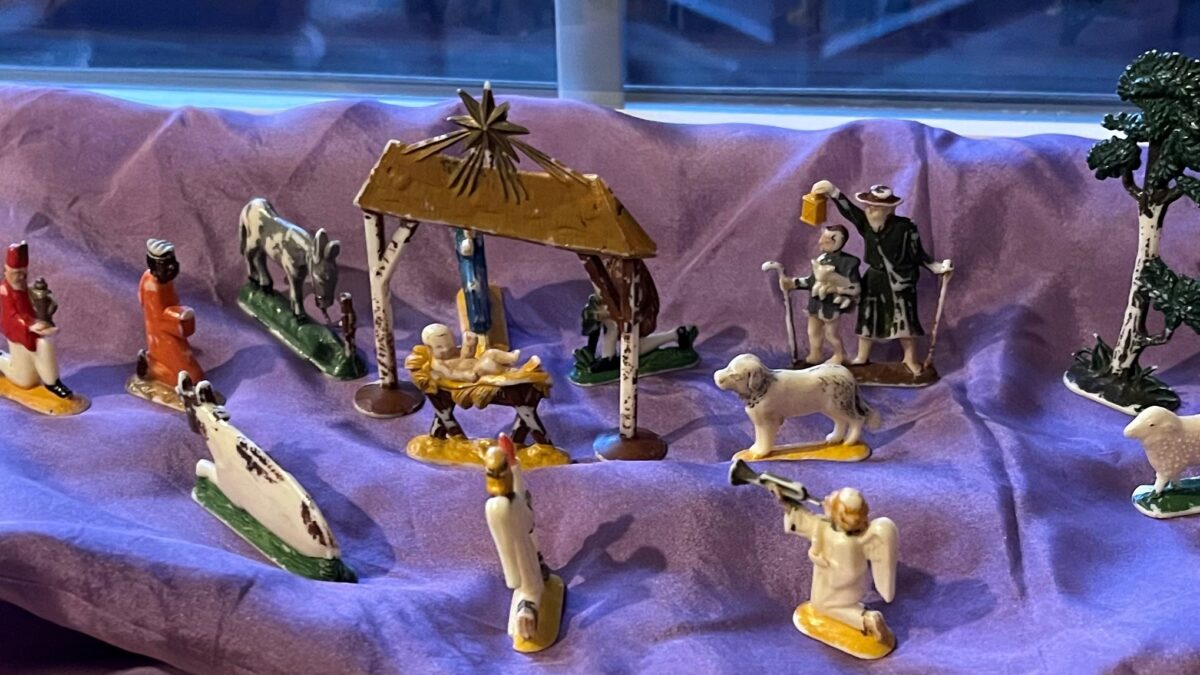
Why I Became A Financial Transitionist
November 15, 2022
How SECURE Act 2.0 Affects You
January 17, 2023
A wonderful book to help families figure out how to distribute non-titled assets is Who Gets Grandma’s Yellow Pie Plate? A Guide to Passing on Personal Possessions. It’s written by the University of Minnesota and is full of terrific worksheets that help families figure out how to navigate the challenges involved in determining who gets the “stuff”—not the cars, houses, bank, and retirement accounts but the personal possessions that are imbued with sentimental value. Their fate can tear families apart.
See this crèche? My siblings and I discovered it in a box of Christmas treasures after my mom died. She hadn’t opened that box for years and I thought the nativity scene had been lost. My overwhelming emotion at seeing the little Hallmark card box these plastic figures had always been stored in was met by fascination among my siblings—no one had known how I would sit and rearrange all the characters every Christmas when I was young, reliving the story.
It comes out every Christmas at my house because it ended up coming home with me, but the journey from unpacking that box in my mom’s apartment to its residence in my home is a long and treacherous one that I wouldn’t wish on anyone. I think that’s probably why I encourage my clients so enthusiastically to think about how to manage expectations—theirs and everyone around them—when it comes to the stuff.
There are lots of good reasons to avoid doing this. For one thing, you live with the stuff and it’s likely for you the pie plate you make your famous pecan pie in has become so familiar that you can’t even imagine the civil war that it could trigger after your death when your children or grandchildren sort out who gets to take it home. It’s only a pie plate to you, right? But that pie plate—or crèche—might come to symbolize what they’ve lost in your passing and provoke an acute experience of grief.
Then there’s the question of fairness. I told my three children many times in their growing-up years that fair and the same were two different things. But perceptions of what is fair differ and we often use the measuring stick of yours-against-mine. In the case of these valuable treasures, what makes them special is their uniqueness. It’s not possible to settle a perception of unfairness by giving everyone the same thing or breaking it up into pieces.
Have you ever stopped and considered what these items embody? What matters to you. Things like wedding photographs, your dad’s hammer or artwork carry personal meaning and represent your values. What makes these items “non-titled,” whether they hold sentimental or monetary value, is that they are without specific instructions about where to go, such as are provided by beneficiary designations on your life insurance and retirement accounts or Transfer-on-Death (TOD) or Pay on Death (POD) designations on your investment or bank accounts.
They will be left to your family and legal representatives to decide where they go. Planning for the transfer of these items can be challenging. The possibility I want to inspire you to see is that planning for the transfer of these items gives you the opportunity to transition out of this life preserving the beauty and meaning of what you have worked so hard to create—and avoid the tears in the woof and warp of family tapestries that can result when this planning isn’t done.
Here are some ideas:
- Start by making a list of the property and possessions that you treasure. I suggest three columns: Type, Description, Location. Suggestions for Type: Clothing (includes jewelry, bags); Hobby (includes tools, art supplies, sport equipment, music); Books (includes cookbooks, coffee table books, reference); Sentimental (includes photographs, letters, journals, baby items)
- What are your reasons for completing this task? Consider this list and check off the ones that are most important to you:
- maintain harmony within my family
- give myself peace of mind
- learn what items are important to family members
- tell others what personal items have value to me
- decide what I think is fair
- discover what my family thinks is fair
- record personal and family history embodied in items
- explore my goals and what I want to accomplish
- What are the challenges you see ahead of you in this process?
- What do you see as alternatives or options for meeting these challenges?
- Assuming you could meet the challenges you described, what is the experience you would like to create for yourself and those around you?
- How will important relationships be impacted? What needs to be done to protect relationships?
- Who else do I/we need to involve in this process?
- Now consider the items on the list. Are there items you assume someone in particular wants? Or you expect they want? List those: Who, What, Why, When, How I/we feel
- Create a “Property Decisions” list and keep it with your Letter of Instruction. Location, item, description, when, to whom.
